#what causes an infected oil gland
Text
What is an oil gland? How does the sebaceous gland (lipoma) pass? 2023
New Post has been published on https://bankakredin.com/what-is-an-oil-gland-how-does-the-sebaceous-gland-lipoma-pass-2023/
What is an oil gland? How does the sebaceous gland (lipoma) pass? 2023
Sebaceous glands , medical term lipomaThey are fat-filled and usually small, tumor-like formations that occur in any part of the body. The sebaceous glands, which can be of various sizes, are surrounded by a capsule and are visible in white-yellow colors. While fat formation can be observed at any age in adulthood, the incidence of this problem in children is quite low.
Sebaceous glands located in visible parts of the body are generally undesirable because they disturb the individual visually. Methods such as squeezing these glands at home and emptying them with a needle both pose a risk of infection and cause scarring in the area where the oil gland is located. For this reason, the procedures to be performed for the removal of the oil glands must be carried out by the physician in a health institution using appropriate equipment.
What is an oil gland?
The encapsulation of the fat deposits in the body by settling under the skin results in the formation of sebaceous glands, also called lipomas. These glands, which can also be described as a simple form of tumor, are generally benign and do not cause any health problems, except for disturbing people in terms of appearance.
While sebaceous glands can be seen in all parts of the body, it most commonly occurs on the face, shoulders, scalp, genital area, neck and back. Many have a soft texture and feel as if they are moving when pressed by hand. This is because they are not fully integrated with the skin. Although sebaceous glands are a problem that can be seen in people of all ages, it is rarely seen in children.
They usually do not cause pain. Pain in these types of glands, It is usually a condition that indicates that the sebaceous gland requires medical attention. Fat cells, which grow and multiply over time, like all cells, can in some cases cause the size of the sebaceous glands to get out of control and to overgrow. In these cases, it is necessary to remove the growing oil glands with the help of surgical operations.
What are the symptoms of sebaceous glands?
The first and most characteristic symptom of sebaceous glands is swelling in the tissue where the gland develops. This swelling can grow slowly and continuously. While the oil glands in the face vary from the size of a pinhead to a few millimeters, the swellings that occur in areas such as the back and neck are larger and deeper.
Again, in the formation of under-eye oil glands on the face and oil gland formation on the eyelid, it is possible that the oil mass inside can be easily seen due to the fact that the gland is white-yellow in color and the skin covering it is very thin. In deep sebaceous glands formed in other parts of the body, since the gland is located in the lower layers of the skin, only swelling is felt, the fat layer cannot be seen from the outside.
They usually do not cause pain. But if the meringue is hit, In case of infection or malignancy, the sebaceous glands may cause pain or discharge over time. Especially in cases of rapid growth, color change, redness and severe pain, lipomas should be removed with the help of surgical procedures and sent for pathological examination.
What causes oil glands?
The exact cause of the formation of oil glands is not known. However, there are some issues that are known to increase the probability of occurrence. Some of the factors that predispose to the formation of sebaceous glands are as follows:
Genetic predisposition
Impact of the skin
High cholesterol and triglyceride levels
metabolic diseases
Unhealthy eating
advanced age
Insulin resistance and diabetes
Liver diseases
Obesity
What are the types of oil glands?
Oil glands are examined under 3 different groups according to their structures. These are as follows:
Sebaceous cysts: Sebaceous cysts , which are commonly seen on the scalp, are not completely glandular, but consist of a fluid fat mass and a very thin layer of skin covering it.
Benign adipose tissue tumors: Adipose tissue tumors , which have a glandular structure commonly seen in the neck and back regions, are generally benign and fall into this group. The fat mass in it is light yellow in color and has a hard structure. Just like other types of cysts, they can reach large sizes and therefore need to be surgically removed.
Malignant adipose tissue tumors: Masses formed as a result of cancerization of the subcutaneous fatty tissue are called malignant adipose tissue tumors. The fluid in these tumors, also called liposarcoma, has a yellow to grayish color. This rare type of sebaceous gland is softer and must be removed with the help of surgical operations.
Apart from the above grouping, the under-eye oil glands are also divided into three. These are examined under 3 subheadings: thin layers of fat called xanthelasma, which occur due to high cholesterol, small round fat cysts called syringoma, and miliums that are smaller than syringoma and have a fainter appearance.
How is the diagnosis of sebaceous gland made?
Visible sebaceous glands can only be detected by physicians by physical examination. Sebaceous cysts usually have a round structure, a spot in the middle and a slightly reddened appearance. In many types of sebaceous glands, the fat mass under the skin is displaced when pressed by hand. A fixed swelling that does not move easily may indicate a different disease.
Although it may vary according to the region where it occurs, lipomas generally have a soft structure and may change shape when pressed during manual examination. In the diagnosis of larger and hard sebaceous glands, the diagnosis can be supported by ultrasonographic imaging in order not to be confused with different diseases with similar appearance.
How is the oil gland treatment done?
Almost 99% of the sebaceous glands are benign and do not tend to become cancerous. However, especially the oil glands in visible parts of the body such as the face and neck do not look aesthetically pleasing and cause discomfort in patients. In addition, although adipose tissue tumors in the back region do not pose any risk to health, they can cause pain due to pressure in situations such as leaning back and using a backpack.
Infection may develop as a result of blows in some oil glands or spontaneously, and accordingly symptoms such as pain, redness, discharge and fever may occur. In all these cases, the glands should be removed with the help of a simple surgical operation, also known as oil gland removal.
This operation is performed under local anesthesia. usually completed in less than half an hour. It does not require hospitalization, patients can be discharged on the same day and return to their daily lives the next day.
In cases where the sebaceous glands do not cause any discomfort to the individual in terms of aesthetic appearance or health, they may not need to be removed. However, it should be kept in mind that these masses may be malignant, albeit very rarely. For this reason, in some cases, a biopsy can be taken for masses that are suspected to be cancerous or that tend to grow rapidly.
By performing a pathological examination of this sample, it can be determined whether the mass is benign or malignant, and the next treatment process can be planned according to this result. If you have sebaceous glands in any part of your body and are wondering how the sebaceous glands go away, you can go through a doctor’s control by applying to a health institution and get rid of the sebaceous glands that bother you.
oil gland,are oil glands part of the integumentary system,are oil glands located in the epidermis,are oil glands in the epidermis,are oil glands,where are oil glands in eyes,where are oil glands located,what are oil glands called,where are oil glands located in the skin,where are oil glands on face,where are oil glands found,can oil glands be removed,bacterial infection of an eyelid oil gland codycross,what is an oil gland cyst,an inflammation of oil gland caused by a bacteria,what causes an infected oil gland,an oil gland is called,can oil glands cause acne,do chickens have an oil gland,can you pop a clogged oil gland,
#an inflammation of oil gland caused by a bacteria#an oil gland is called#are oil glands#are oil glands in the epidermis#are oil glands located in the epidermis#are oil glands part of the integumentary system#bacterial infection of an eyelid oil gland codycross#can oil glands be removed#can oil glands cause acne#can you pop a clogged oil gland#do chickens have an oil gland#oil gland#what are oil glands called#what causes an infected oil gland#what is an oil gland cyst#where are oil glands found#where are oil glands in eyes#where are oil glands located#where are oil glands located in the skin#where are oil glands on face
0 notes
Text
SOME ESSENTIAL OILS
Jasmine (Jasminum officinale) is an "absolute" extracted from the flower and is an essence rather than an essential oil. It is good for sensitive skin and can also be uplifting and stimulating. Considered an aphrodisiac for centuries, Jasmine supports the nervous system and is helpful for women going through menopause.
Lavender (Lavandula angustifolia) is the most versatile of all essential oils. Therapeutic-grade lavender has been highly regarded for the skin. The French scientist Rene Gattefosse was the first to discover these properties when he severely burned his hands in a laboratory explosion. Lavender has also been clinically evaluated for its relaxing effects. It may be used to cleanse cuts, bruises, and skin irritations. The fragrance is calming, relaxing, and balancing -- physically and emotionally. Makes an excellent rub for sprains, strains, and sore muscles (used in carrier oil) and goes well mixed with Tea Tree Oil (Melaleuca). Can be taken internally (1 to 3 drops in a cup of water) for headaches and even migraines.
Lemon (Citrus limon) has antiseptic-like properties and contains compounds that have been studied for their effects on immune function, lymphatic, circulatory, and digestive systems. Is antibacterial and may serve as an insect repellent as well as being beneficial for the skin.
Rose (Rosa damascena) has a beautiful fragrance that is intoxicating and aphrodisiac-like. Rose helps bring balance and harmony. In his clinical practice, Dr. Penoel uses this oil for the skin. It is stimulating and elevating to the mind, creating a sense of well-being. It has been called the Queen of oils for women's concerns, establishing harmony throughout the body no matter what life brings. It is also great for circulation and skin care.
Rosemary (Rosmarinus officinalis) has been researched for its antiseptic properties. It may be beneficial for the skin and for helping overcome mental fatigue. Beneficial for the circulatory, nervous, and muscular system. Has a history of use over the centuries for hair and skin. NOT TO BE used with high blood pressure or epilepsy.
Sandalwood (Santalum album) is high in sesquiterpenes and has been researched in Europe for its ability to oxygenate a part of the brain known as the pineal gland, the seat of our emotions. The pineal gland is responsible for releasing melatonin, a powerful hormone that enhances deep sleep. Sandalwood is similar to frankincense oil in its support of nerves and circulation. It was used traditionally for skin revitalization, yoga, and meditation, and has been found to help remove negative programming from the cells (again, another cancer weapon). Also traditionally used for urinary and respiratory systems.
Thyme (Thymus vulgaris) is one of the most antiseptic essential oils and very high in antioxidant rating. It contains thymol, which has been studied for its effect on gingivitis and plaque-causing organisms in the mouth. It may be beneficial in helping to overcome fatigue and exhaustion. Sharp and woody aroma, helps improve circulatory, immune, skeletal, respiratory and nervous systems; anti-microbial use for infections and disinfectant use; dilute with water to clean and disinfect surfaces; especially good to use in a sickroom; makes a good massage oil as it stimulates circulation and can be used to clean burns and wounds; inhaled, it aids in asthma attacks and is a good choice if you are recovering from pneumonia.
#witchcraft#witchblr#herbal#magical herbs#herbalism#green witch#essential oils#witch community#witchyvibes#eclectic witch#witch#witches#witchy things
43 notes
·
View notes
Text
Pregnancy-friendly skin care
During pregnancy, a woman expects many surprises. And it's not just about a growing belly and unexpected food addictions. The body and skin of the mother-to-be literally change before our eyes. The skin frequently becomes more sensitive, and age spots and rashes appear.
Skin changes during pregnancy
According to a clinical study of skin changes in low and high-risk pregnant women, approximately 89% of pregnant women experienced skin changes. This rate proves that skin changes during pregnancy are not uncommon. Even if you do not experience any changes during pregnancy, your skin may change after delivery.
Dryness of the skin
During pregnancy, the mother's blood volume increases up to 1.5 times. In addition, during pregnancy, much of the water drunk by the pregnant woman is used to maintain the volume of the amniotic fluid. And after giving birth, a significant amount of the body's water is used in breast milk. Both of these reasons contribute to dry skin during pregnancy.
Roughness and sensitivity of the skin
During pregnancy, the body's resistance weakens, and the woman becomes more susceptible to infections. One theory is that this is a reaction to avoid the baby being perceived as a foreign substance. The same is true for the skin, which becomes very sensitive to external stimuli.
Susceptibility to dyes
The female hormones that increase during pregnancy have the function of activating the action of melanocytes that produce melanin. As a result, spots and freckles on the face are visible, and pigmentation of the sides, crotch, and joints is likely to occur.
Ease of acne onset.
Hormonal changes can be a major cause, but surprisingly, "dryness" can also be a factor. If your skin is dry, excess oil may be secreted to make up for what you lack. Therefore, neglecting moisturizing simply for fear of acne and sticky skin is a mistake.
Overall, the most common changes are dryness and tightness. These are most often associated with excess female sex hormones and usually disappear after pregnancy. However, a new skin type requires new care ! Therefore, at the first signs of unpleasant changes, it is worthwhile to stop using cosmetic products for a while and observe the skin.
When choosing skin care products for the face and body, it is important that the woman takes into account her new condition, because during pregnancy the body becomes more sensitive. It is worth choosing special cosmetic products for pregnant women: they are hypoallergenic, do not contain harmful ingredients, and are safe for the pregnant woman and the baby. The same applies to the choice of salon procedures: they should be selected taking into account the "special position" of the woman.
Facial care during pregnancy
To care for dry skin, the gentlest products that nourish and moisturize well are suitable. Creams and emulsions should contain vitamins A and C, as well as saturated fatty acids. It is best to stop with salon peels for a while: replace this procedure with massages and cleansing masks.
Oily facial skin during pregnancy needs to regulate the work of the sebaceous glands. This task is well fulfilled by the antioxidants contained in the creams: vitamins A and C, green tea or grape seed extracts. Oily skin also needs to be moisturized: as it loses its moisture, it absorbs the fats released with all the impurities accumulated on the surface. It is therefore useful to abandon the drying of toners containing alcohol and replace them with slightly acidic toners (pH not lower than 5). For cleansing, gentle scrubs and masks that you can make yourself (for example, the oatmeal and plain yogurt mask) are suitable.
Combination skin can be of two types: oily and dry. The latter is particularly prone to rapid aging, which is why products with protective and regenerating components, like avocado oil or wheat germ oil, are best for it. For combination skin with an oily tendency, deep cleansing is important; gentle scrubs are useful here; they should not be used more than once or twice a week. In the salon, you can opt for a course of fruit acid peels, which not only cleanse, but also tighten pores, helping to fight blemishes.
Body care during pregnancy
Mothers-to-be are often concerned about flaking, itching, tightness, and stretch marks.
Stretch marks are nothing more than microtrauma on the surface of the epidermis. The purple, pink, or white "cracks" are due to the connective tissue that fills the empty spaces. The main causes of stretch marks are hormonal disorders associated with a decrease in the production of elastin and collagen. The skin becomes dry, and instead of stretching, it tears. To avoid this, it is important to nourish and moisturize the skin intensely, not only from the outside but also from the inside. To prevent stretch marks during pregnancy, it is recommended to drink about 2 liters of water a day (to avoid swelling, drink most of the liquid in the morning).
Moisturize and nourish the skin well using avocado fruit extracts, shea butter, almond and coconut oils. And for the comfort of the legs, which are under enormous stress during this period, you can choose menthol or centella treatments.
If the condition of the skin is very worrying for the mother-to-be (significant rashes, acne, and other obvious changes have appeared), it is best to contact specialists; first of all, a dermatologist and an allergist. They will help identify the cause of the alarming symptoms and choose the optimal and safest treatment.
You can learn more about this topic by clicking on this link.
#skincare#moisturizer#organic#skin care products#skincareproducts#skincaretips#sunscreen#acne#skincarelover#beautytips#antiaging#beauty products#skincream#skin protection#makeup#anti ageing tips#skincareaddict#skin care#skin health#skin tips#skin treatment#skin disorders#skin problems#healthy#healthy lifestyle#nutrition#beauty#pregnancy#pregnant
18 notes
·
View notes
Text
About an Eye stye "Akasekere"
What is an Eye stye?
A stye is a small, painful lump on or near the eyelid. It is caused by an infection of one of the tiny oil glands in the eyelid. Styes are very common, and most people will get one at some point.
What are the symptoms of a stye?
The most common symptoms are:
A red, swollen bump on the eyelid
Pain and tenderness
Warmth and redness around the eye
Watery eyes
Irritation…
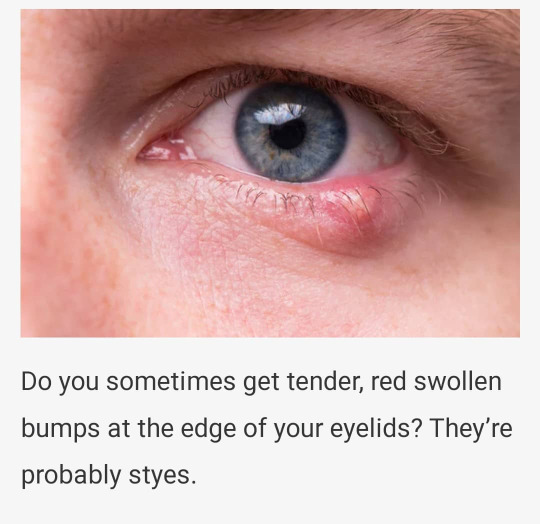
View On WordPress
2 notes
·
View notes
Text
What To Know About Cherry Eye In Dogs
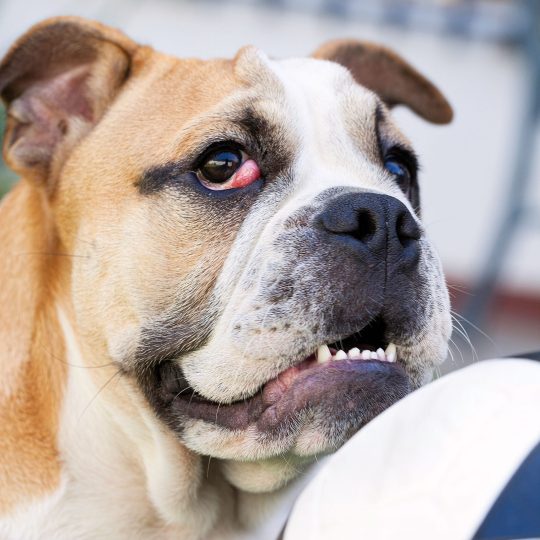
As you stare into your dog’s eyes, you may have noticed that they actually have three eyelids, not just two like humans do! Dogs have an upper and lower eyelid similar to people, and then one that is positioned at the inside corner of the eye that slides under the other two lids. It’s a great design to keep the eye protected and this third eyelid is crucial for producing tears.
What is Cherry Eye in Dogs?
Occasionally, the gland located in this third eyelid can prolapse, or become everted causing a ‘cherry eye’. This looks like a fleshy pink protrusion at the corner of the eye and is not painful. Many times the dog isn’t bothered by it at all, although infection or conjunctivitis can accompany a cherry eye. As the prolapsed gland becomes irritated, it can swell and become quite irritated and large.
What is the Third Eyelid and Why is it Important?
The tear film has three portions, the aqueous/ liquid portion, an oil, and a mucoid portion.
The oil portion comes from the glands of the upper and lower lids. The mucoid portion comes from the conjunctiva (the white part around the eye). The tear portion comes from two lacrimal glands, one above the eye and the other located in the third eyelid.
When the third eyelid is prolapsed or damaged, the eye becomes at an increased risk for not being able to produce enough tears, causing a dry eye. Left untreated, about 40% of eyes with a cherry eye will subsequently lose the ability to produce tears from that gland, leading to a dry eye. A dry eye is uncomfortable, can be prone to infections, and corneal damage.
In addition to producing a portion of the tear film, the third eyelid also protects the globe from trauma and irritants.
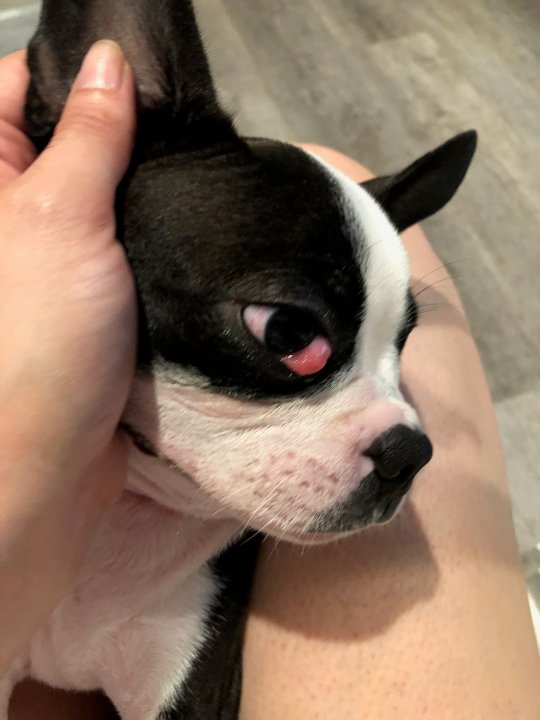
What Causes a Prolapsed Third Eyelid or Cherry Eye?
The underlying cause for a Cherry Eye is unknown. A hereditary component has been documented and there are many breeds that are overrepresented with regards to the diagnosis of cherry eye.
Affected Breeds
Cherry eye is most common in the following breeds:
American cocker spaniel
Beagles
Bloodhounds
Boston terriers
Shih Tzus
Bulldogs
Mastiffs
Newfoundlands
The majority of prolapsed third eyelids are diagnosed in young dogs less than 2 years of age, although the onset can vary.
About 40% of dogs that have a cherry eye in one eye will go on to prolapse the other gland as well1. In most cases this happens within 3 months of the first prolapse.
Treatments for Cherry Eye in Dogs
The diagnosis of a cherry eye needs to be made by a veterinary professional. In general, the diagnosis is made based on the appearance of the pink fleshy mass at the inside corner of the eye. Your vet will probably do some tests on the eye, including tear testing, and staining to ensure there are no other problems. Unfortunately, there are no known preventative measures for cherry eye only to treat it either medically or surgically, so no further infections occur.
Medical Treatments for Cherry Eye
Often an attempt to manage the prolapsed third eye medically is made initially prior to any surgical attempts. This is generally unsuccessful, but topical steroids can be used to reduce swelling and inflammation. This, in turn causes the gland to shrink, and in mild or intermittent cases, some can resolve.
Surgical Treatments for Cherry Eye
In general, surgery is indicated to replace the gland in its original position. A gland left prolapsed is more prone to losing the ability to produce tears and develop a dry eye.
An older surgical method included excising and removing the gland altogether. While cosmetically this looks good, about 50% of eyes treated this way develop dry eye, versus 14% in those that are surgically replaced.
Recovery time is generally quick. Most pets are sent home with eye drops and oral pain medication, as well as an Elizabethan collar (cone of shame). There is a possibility of re-prolapse, and statistics vary depending on the surgical technique used and the skill level of the surgeon but are thought to be less than 25%.
7 notes
·
View notes
Text
Although you would believe it, the toilet seat is not the object in your house with the most germs. In reality, the towels you use to wipe your face are the ones that are the most contaminated, therefore you may be harming your skin by doing so. And although it may seem sensible to dry your face with a towel, doing so might really be more harmful than helpful.
After doing this study, healthhealth is seriously contemplating doing away with the towels. Don't forget to look at the extra we have provided for you at the conclusion of the post if you're unsure of what to use in its place.
1.It could cause acne.
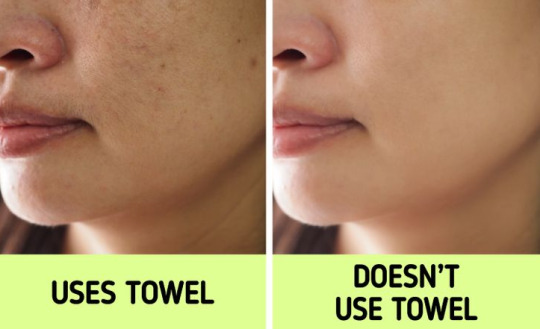
Using the same towel to dry your face and body may be more detrimental to your skin than you realize. Because we often keep towels in bathrooms with wet air, which is a wonderful setting for bacteria growth, towels make excellent bacteria traps. All of these germs are transferred to your skin when you brush the towel against your face, which might ultimately result in breakouts and blocked pores. Even if you use a different towel to dry your face from the one you use to dry your body, you probably aren't cleaning it every day, which means that unwelcome germs may still get on your skin.
2.Your skin could age faster.

When used on your face, terry cloth bath towels are overly rough and may cause little skin rips that leave you more prone to infections and wrinkles. The fabric of the towels becomes brittle the more you wash them, and the friction they produce serves as an exfoliation that may be too harsh for your skin.
3.It makes skincare products less effective.
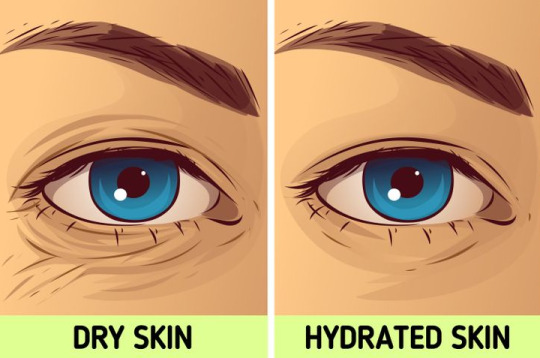
Although it may feel natural to dry your face after washing it, doing so can prevent your skin from benefiting fully from the items you're using on it. Prior to the skin's surface water completely evaporating, your moisturizer will better absorb into the skin. By avoiding towel drying, your skincare products will be able to seal in the moisture your skin needs to appear radiant and young.
4.Your skin may get irritated.
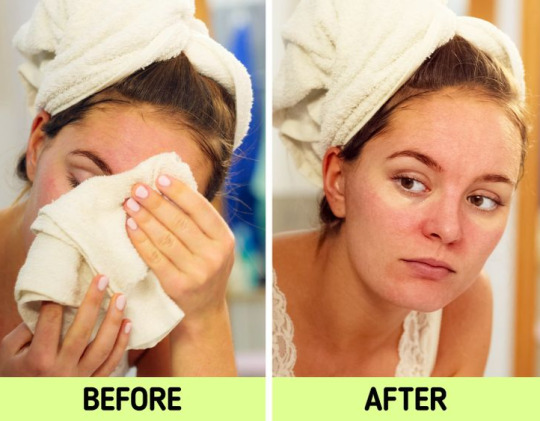
Using towels to dry your face isn't the ideal choice if you have sensitive skin. Wiping your face with most towel materials may cause skin irritation and redness because they might be excessively rough on the skin.
5.It could result in greasy skin.
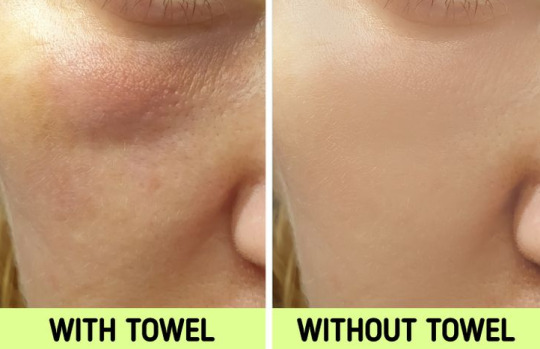
Although it may seem counterintuitive, drying your skin can actually make it greasier. Sebaceous glands under the skin's surface will have to create extra oil to balance out the dryness since rough towels may take away natural oils your skin needs to keep healthy, which can result in excessively oily skin.
Bonus: Face-drying techniques without a towel
Allow the air to do its work rather than using a towel to pat your face dry. Although it takes more time than just wiping your face with a towel, air-drying is more sanitary and kind to your skin. Your skin will appreciate it.
As normal, wash your face.
Allow the skin to dry naturally.
Use your preferred moisturizer.
Do you wipe your face with your bath towel? Can you come up with any other options than using a towel to dry your skin?
More content from beauty
What Could Occur If You Stop Eating Salt to Your Skin
7 Indian Hair Care Secrets to Get Shiny, Thick Hair
6 Natural Ways to Regrow Hair and Prevent Hair Loss
6 Ways to Permanently Remove Ingrown Hairs
8 Exercises That Can Reduce Wrinkles and Make You Look Younger
2 notes
·
View notes
Text
15 home remedies for acne
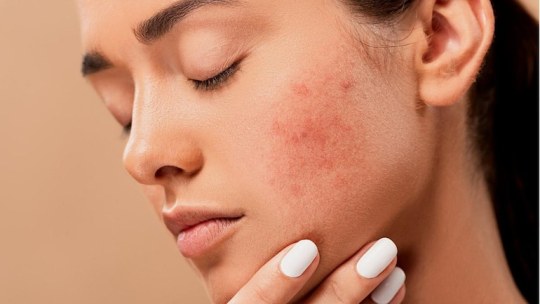
Acne is a hypersensitive reaction of the sebaceous glands of the pores and skin. Hormones, micro organism, and infection can cause zits lesions performing at the pores and skin.
Causes of zits also can include:
Some of the maximum famous domestic treatments for zits contain herbal natural extracts, a lot of which conventional medication practitioners can also additionally use.
Below, we talk the high-satisfactory domestic treatments for zits, what the studies says, and way of life modifications that may assist.
If an character is inquisitive about attempting positive topical treatments, it is a great concept to speak with a dermatologist earlier than making use of the topical treatment without delay to the pores and skin, or do a patch take a look at first, which includes placing a small quantity of the topical remedy at the wrist or hand to check for pores and skin reactions.
BEST HOME REMEDIES HANDBOOK
1. Tea tree oil
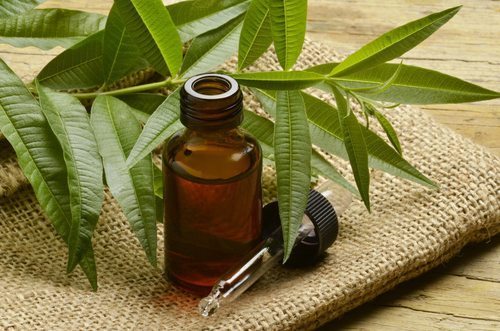
Tea tree oil is a herbal antibacterial and anti inflammatory, because of this that that it would kill P. acnes, the micro organism that reasons zits. Tea tree oil’s anti inflammatory houses suggest that it could additionally assist lessen the swelling and redness of zits.
A 2019 evaluation take a look at checked out the prevailing proof for tea tree oil and zits. The researchers located that tea tree oil merchandise can lessen the quantity of zits sores in humans due to tea trees’ antimicrobial capabilities. This identical evaluation additionally mentioned studies displaying the entire quantity of zits lesions of take a look at contributors changed into decreased from 23.7 to 10.7 after eight weeks of the use of tea tree oil facial merchandise.
— How to apply tea tree oil
People can follow tea tree extract to their zits in lotions, gels, or critical oils. However, a 2016 evaluation article factors out that tea tree oil can purpose hypersensitive reactions in a few individuals, and shows humans use tea tree oil merchandise beneathneath 5% attention to keep away from pores and skin irritation.
Although studies shows that critical oils can also additionally have a few fitness benefits, it’s miles essential to don’t forget that the Food and Drug Administration (FDA) does now no longer reveal or adjust the purity or first-class of these. A man or woman need to speak with a healthcare expert earlier than the use of critical oils, and that they need to make sure to analyze the first-class of a brand’s merchandise. A man or woman need to continually do a patch take a look at earlier than attempting a brand new critical oil.
SUPER FOODS FOR SKIN
2. Jojoba oil
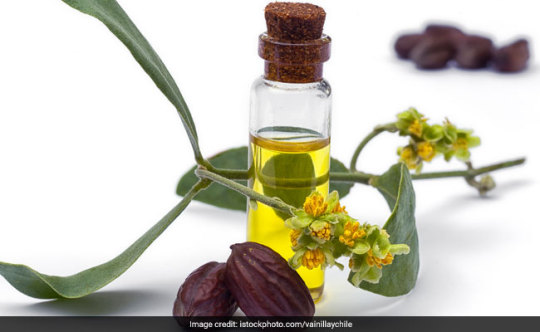
Jojoba oil is a herbal, waxy substance extracted from the seeds of the jojoba shrub. The waxy materials in jojoba oil can also additionally assist restore broken pores and skin, which may additionally assist accelerate wound restoration, which include zits lesions.
Some of the compounds in jojoba oil may assist lessen pores and skin infection, which can also additionally lessen redness and swell round zits, whiteheads, and different infected lesions.
In a 2012 take a look at, researchers gave 133 humans clay face mask that contained jojoba oil. After 6 weeks of the use of the mask to 3 instances in line with week, humans suggested a 54% development in zits.
— How to apply jojoba oil
Try blending jojoba critical oil with a gel, cream, or clay face masks and use it on zits. Otherwise, vicinity some drops of jojoba oil on a cotton pad and rub this lightly over zits sores.
3. Aloe vera

Aloe vera is a herbal antibacterial and anti inflammatory, which means it can lessen the arrival of zits and save you zits breakouts.
Aloe vera incorporates sugar molecules, amino acids, and zinc, making it an brilliant pores and skin moisturizer and protectant. It is particularly appropriate for folks that get dry pores and skin from different anti-zits merchandise.
In a 2021 take a look at, researchers decided that the quantity of bumps, lesions, and dry pores and skin diminished whilst the use of aloe vera mixed with ultrasound and tender masks applications.
— How to apply aloe vera gel
An character need to easy zits sores after which follow a skinny layer of cream or gel two times day by day after cleaning with soap.
Best Home remedies for you
4. Honey
For heaps of years, honey has handled pores and skin situations as it incorporates many antioxidants that may assist to clean clogged pores. However, at the same time as there’s proof that honey has particular antimicrobial effects, a 2016 evaluation did now no longer discover sturdy proof for honey’s impact on zits specifically.
— How to apply honey
Using a easy finger or cotton pad, rub a bit honey into zits. Otherwise, upload honey to a face or frame masks.
5. Zinc
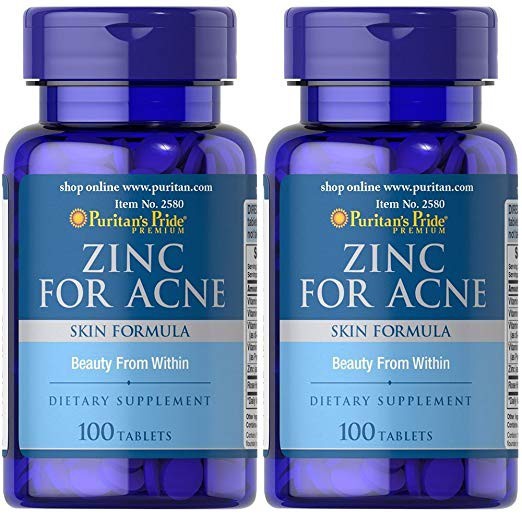
With its anti inflammatory houses, zinc is frequently touted as a technique to lessen zits lesions and redness.
According to a 2021 article, studies is conflicting on zinc’s effectiveness. However, someone can anticipate higher consequences whilst making use of the complement without delay to the pores and skin. The motive is that after taken orally, a number of the complement receives damaged down withinside the digestion technique and can lose efficacy alongside the way.
— How to apply zinc
People can follow zinc topically onto the pores and skin or take it thru complement form.
BEST HOME REMEDIES FOR SKIN
6. Green tea
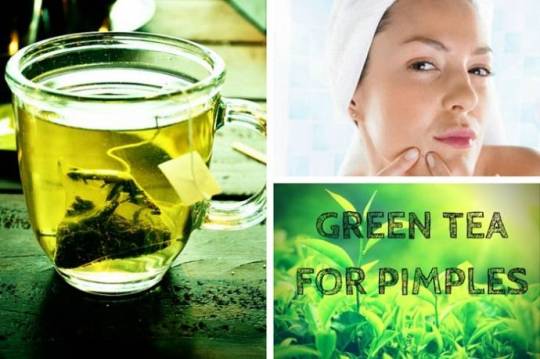
Green tea incorporates excessive concentrations of a collection of polyphenol antioxidants known as catechins.
Some humans with zits have an excessive amount of sebum, or herbal frame oils, of their pores and now no longer sufficient antioxidants. Antioxidants assist the frame spoil down chemical compounds and waste merchandise that may harm wholesome cells.
— Green tea additionally incorporates compounds which can assist to:
1.lessen the pores and skin’s sebum production
2.lessen P. acnes
3.lessen infection
— How to apply inexperienced tea
An character can both drink inexperienced tea or placed inexperienced tea extract on their pores and skin, aleven though researchers say modern-day proof is limited. However, one 2017 take a look at located a 79–89% discount in whiteheads and blackheads after the use of a polyphenol inexperienced tea extract for eight weeks. People can discover inexperienced tea in maximum meals shops. Green tea extract is extra tough to discover however to be had from a few fitness shops or on-line.
BEST HOME REMEDIES FOR SKIN HANDBOOK
7. Echinacea
Echinacea, additionally called crimson coneflower, can also additionally include compounds that assist damage viruses and micro organism, which include P. acnes.
Many humans agree with that echinacea can increase the immune gadget and decrease infection to combat off or save you infections, which include colds and flu. While there’s a few proof that echinacea can assist prevent the unfold of P. acnes and opposite infection as a result of micro organism, modern-day studies is minimal.
— How to apply echinacea
People can follow echinacea lotions to regions with zits lesions or take echinacea supplements. Echinacea merchandise are to be had from fitness shops or on-line as lotions or supplements.
8. Rosemary

Rosemary extract, or Rosmarinus officinalis, incorporates chemical compounds and compounds with antioxidant, antibacterial, and anti inflammatory houses. Further studies is wanted to degree its effectiveness.However, a 2016 studies article advised that rosemary extract can lessen infection from the zits-inflicting micro organism P. acnes.
9. Purified bee venom
Although it is now no longer wildly to be had, purified bee venom incorporates antibacterial houses.
In a 2016 take a look at, folks that carried out a gel containing purified bee venom to their face for six weeks noticed a discount of slight to slight zits lesions. Though extra studies is wanted, purified bee venom can be a useful destiny factor in zits medication.
10. Coconut oil
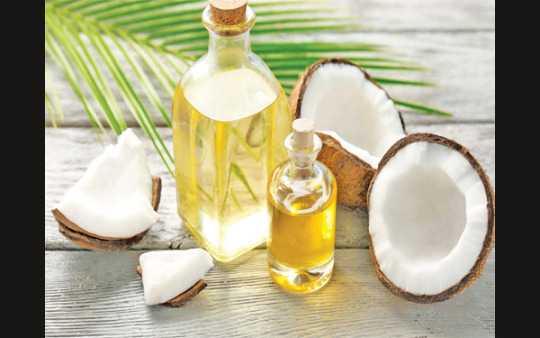
Like a few different herbal treatments listed, coconut oil incorporates anti inflammatory and antibacterial compounds.
These houses suggest that coconut oil can also additionally assist eliminate zits-inflicting micro organism and decrease the redness and swelling of zits. Due to its soothing and moisturizing effects, coconut oil can also additionally assist accelerate the restoration of open zits sores. However, centered studies on coconut oil as an zits deterrent is lacking.
— How to apply coconut oil
Try rubbing pure, virgin coconut oil without delay into the vicinity with zits. Look for coconut oil withinside the herbal ingredients segment of grocery shops or on-line. Along with domestic treatments, particular way of life modifications may have a effective impact on maintaining the frame wholesome, making the pores and skin much less oily, and lowering zits flare-ups.
11. Avoid touching zits
It may be very tempting, however touching zits sores will worsen the pores and skin, can also additionally make the pimple worse, and might unfold zits to different regions.
Touching, rubbing, squeezing, or popping zits sores also can introduce extra micro organism into the lesion, inflicting similarly infection. Squishing a pimple can push micro organism and particles similarly into the pores and skin, so the spot can also additionally come lower back worse than it changed into earlier than. Talk with a medical doctor approximately huge sores or the ones deep beneathneath the pores and skin to discover the way to deal with them safely.
12. Choosing the proper cleanser
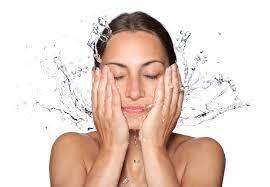
Many everyday soaps have an acidity, or pH, this is too excessive and might worsen the pores and skin, making zits worse.
Choose slight cleansers, rinses, and washes to lessen the hazard of zits flare-ups and allow sores heal.
13. Using oil-unfastened pores and skin care
Oil-primarily based totally or greasy merchandise can block pores, growing the hazard of clogged and developing zits sores.
Look for pores and skin care merchandise and cosmetics categorized as “oil-unfastened” or “noncomedogenic,” which include elements that permit pores to breathe.
14. Staying hydrated
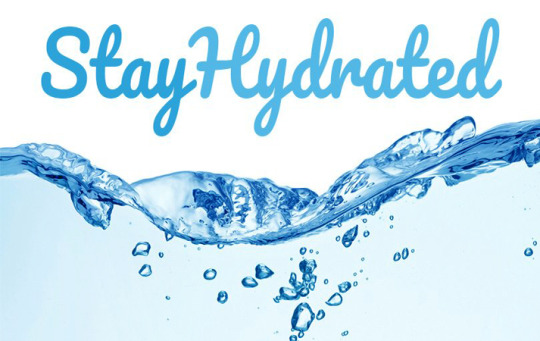
When the pores and skin is dry, it could grow to be indignant or broken, that may make zits worse. Staying hydrated additionally guarantees new pores and skin cells broaden successfully as sores heal.
There isn’t anyt any widespread day by day endorsed water consumption due to the fact every man or woman’s water desires range relying on age, how lively they are, temperature, and any scientific situations.
Making a focused attempt to drink extra water for the duration of the day is a great beginning point.
BEST HANDBOOK FOR SKINCARE
15. Reducing stress
The American Academy of Dermatology lists strain as a likely purpose of zits flare-ups.
Stress reasons ranges of the hormone androgen to increase. Androgen stimulates hair follicles and oil glands in pores, growing the hazard of zits.
Tips for coping with stress include:
1.speakme with family, friends, a medical doctor, or different supportive humans.
2.getting sufficient sleep.
3.consuming a healthful, balanced diet.
4.workout regularly.
5.proscribing alcohol and caffeine consumption.
6.practising deep breathing, yoga, mindfulness, or meditation.
2 notes
·
View notes
Text
Face long pimple, what is the general reason?
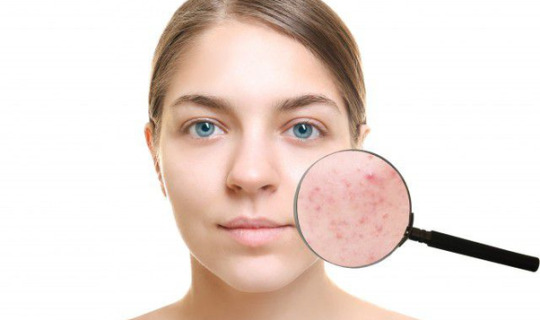
Why does good skin suddenly break out overnight? In fact, acne does not break out overnight, there are many reasons for acne, including:
1. Excessive oil secretion
Too much oil produced by the sebaceous glands can lead to clogged pores, which can lead to breakouts.
2. Bacterial infection
Bacteria on the surface of the skin can cause inflammation and infection, leading to the formation of breakouts.
3. Hormonal changes
Changes in physiological states such as puberty, menstruation, and pregnancy can lead to changes in hormone levels, which can cause acne.
4. Stress and anxiety
Chronic stress and anxiety can affect the body's immune system and hormone levels, which can lead to the formation of breakouts.
5. Unhealthy eating
Unhealthy eating habits such as high sugar, high fat and high salt can lead to an imbalance in the body's internal environment, which can lead to the formation of acne.
6. Bad living habits
Such as staying up late, smoking, drinking and other bad habits will affect the health of the body, resulting in the formation of acne.
0 notes
Text
Can Hard Water Cause Dandruff
Ever had that annoying moment when your scalp becomes an itchy, flaky battleground? Well, brace yourself, because the culprit might just be hiding in your tap water. We all tend to overlook the quality of the water we use on our hair, but surprise, surprise – hard water might be the secret saboteur behind those snowstorm vibes on your shoulders. In this blog post, we're unraveling the lesser-known link between hard water and dandruff. Stick around as we navigate through the mysteries of those stubborn white flakes and discover some easy-peasy steps to keep your hair in the clear, even when faced with the challenges of hard water.
Dandruff is a condition in which the scalp becomes tangled with hair, especially on the top of one's head, and can appear as a patchy covering of skin that looks like a black headband across the scalp. Dandruff often results from constantly exposing your body to an oily substance. It is thought that the oil and dead skin cells build up over time on the scalp's surface.
The sebum from this oil leads to inflammation and dirtiness on the skin, causing breakouts. This is usually when you have hot showers or want a change of clothes before going out into public. Dandruff is often associated with pregnancy and menopause due to hormone changes. If this happens, your hair will also start growing out, but not as quickly as before. You may find that you need a facial or a haircut if you notice your hair falling out.
What Are Its Causes?
Environment
The environment causes dandruff in addition to genetics. Exposure to cold weather increases sebum production, which contains more bacteria, lessening your body's ability to fight infection.
Genetics
As for genetics, research shows that people who inherit genes that affect how the oil glands work may develop dandruff. Those whose parents had seborrheic disorders may be at higher risk for developing seborrheic dandruff, which is an extreme form of the condition. Many people had some dryness when they were kids, even though there was no reason to expect it to happen as it did. When they started to see signs their hair felt tight, they would do anything to fix it, which has since worsened.
Dryness
If dry skin is a cause of dandruff, it is easy to understand that different pieces of your body will probably be dry too. Dry skin can deteriorate throughout the year because of temperature, and the equivalent goes for your scalp. A dry scalp that causes dandruff is not something that is not treatable, like dry skin elsewhere. You need to saturate, particularly as you are shampooing on a more regular basis.
Skin Conditions
Skin conditions also cause dandruff. But it depends upon the seriousness of these skin conditions; over-the-counter medicines may not cover them. Consult with your dermatologist before using anything new.
1 note
·
View note
Text
Viva Aesthetic Clinic’s Acne Treatment in South Mumbai
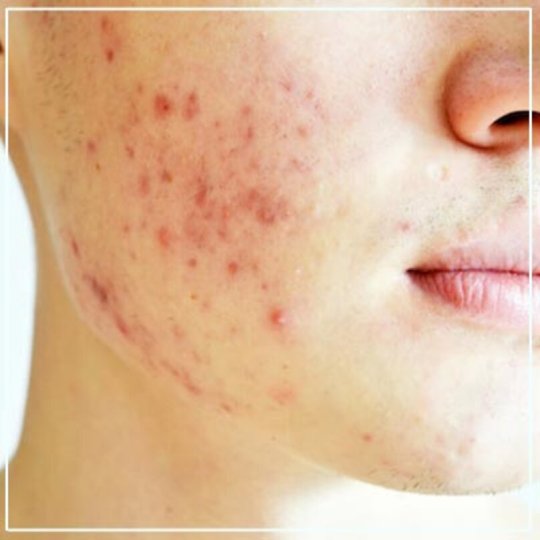
Acne, a prevalent skin condition, manifests as pimples on various areas like the face, forehead, shoulders, chest, and upper back. Viva Aesthetic Clinic offers top-notch Acne Treatment in South Mumbai to help you achieve clear, radiant skin. Factors like genetics, hormonal fluctuations, stress, and environmental influences can trigger acne outbreaks at any age.
Common Sites for Acne
Oil glands are abundant in areas like the face, forehead, chest, shoulders, and upper back. The severity of acne varies from mild (few pimples) to moderate (inflammatory papules) to severe (nodules and cysts).
Types of Acne
Blackheads: Open lumps filled with excess oil and dead skin.
Whiteheads: Sealed bumps due to oil and dead skin.
Papules: Small red or pink pimples.
Pustules: Pus-filled pimples that can scar if picked.
Nodules: Large, solid lumps under the skin.
Cysts: Painful, pus-filled lumps under the skin.
Causes of Acne: Unveiling the Culprits
Acne primarily stems from hormonal imbalances triggered by androgen hormones during adolescence and young adulthood. Other factors like microbial presence on the skin surface, oily products, stress, pollution, and genetics can exacerbate acne.
What are the different types of acne?
Acne is a common skin condition that affects many individuals, especially teenagers and young adults. It is characterized by various types of blemishes, each requiring different treatment approaches. The main types of acne blemishes include:
Blackheads and Whiteheads: These occur when pores become clogged with excess oil, bacteria, and dead skin cells. Blackheads are open pores filled with debris, while whiteheads are closed pores with a white or flesh-colored bump.
Papules: Small, red bumps caused by inflammation when oil, bacteria, and dead skin cells push deeper into the skin.
Pustules: Similar to papules but contain a yellowish fluid, often with a yellow or white center.
Acne Nodules and Cysts: These are severe blemishes that penetrate deep into the skin and can lead to permanent scarring.
Diagnosis and Treatment Options
Diagnosing acne involves a thorough skin examination by a clinician. Various treatment modalities are available to combat acne effectively:
Topical Treatments
Benzoyl Peroxide: Kills bacteria and unclogs pores.
Clindamycin: Anti-inflammatory topical antibiotic.
Tretinoin (Vitamin-A): Effective for clogged pores.
Clascoterone: Reduces oil production and inflammation.
Triclosan/Triclocarban: Antibiotic cream targeting pore-clogging bacteria.
Oral Medications
Oral Antibiotics: Doxycycline and Azithromycin combat bacterial infections.
Vitamin Supplements: Zinc aids in wound healing to prevent scarring.
Isotretinoin: Potent treatment for severe acne.
Hormonal Treatments
Birth control pills and spironolactone can help manage hormonal acne in women.
Steroids
Oral steroids are reserved for severe cases or inflammation reduction.
Chemical Peels
Specialized chemicals remove old skin layers to promote smoother skin growth.
Laser Treatments
Laser therapy targets acne scars by stimulating collagen production for healthier skin regeneration.
Viva Aesthetic Clinic: Your Acne Treatment Destination
At Viva Aesthetic Clinic in South Mumbai, Dr. Deepam Shah leads a team of experts specializing in dermatology, cosmetology, and hair transplant surgery. With a range of advanced treatments tailored to your needs, Viva Aesthetic Clinic is your go-to destination for flawless skin.
For personalized consultation on Acne Treatment in South Mumbai with Dr. Deepam Shah, visit us at Opera House or contact us at 022 3573 1556 | 93245 89084. Say goodbye to acne woes with Viva Aesthetic Clinic!
#vivaaestheticclinic#best dermatologist in mumbai#dr. deepam shah#skin specialist in mumbai#skin specialist in south mumbai#dermatologist in mumbai#best dermatologist in south mumbai#dermatologist in south mumbai#hair transplant in mumbai#viva aesthetic clinic
0 notes
Text
How to Cure Acne Naturally?

Understanding Acne:
Acne vulgaris is a skin breakout condition which everyone suffers once in his/her life. It is a very common skin condition that causes spots and pimples on face, forehead, neck, back etc. it occurs when hair follicles lodged with oil, dirt or dead skin cells. It causes pimples, blackheads, whiteheads, pustules etc. Sometimes the large pus-filled bumps are painful to touch. Depending upon the severity of the acne it leaves scars and emotional distress on a person. Puberty and adolescent is the time when sebaceous glands activates and causes acne, but can occur at any age. Acne breakout leaves a negative effect on a person skin as well as self-confidence. Popping out the acne is not the cure but only leaves a permanent scar.
Different types of Acne:
Blackheads
Whiteheads
Papules
Pustules
Fungal acne (pityosporum folliculitis)
Nodules
Cysts
Ayurveda’s view over Acne:
Our aacharyas mentioned Acne Vulgaris as Yuvanpidika. The major cause explained by them is the vitiation of doshas such as Vata, Kapha along with Rakta dhatu. Yuvanpidika has been discussed under the heading of Kshudra Roga. All these vitiated dosha along with Rakta circulates all over body with the help of Sarotas (microchannels) and causes acne wherever it lodged.
Aachaya Charaka has mentioned hormonal acne as Vivridhadhatu kala at the age of 16-30 years. He explained this as a starting period of functional state of shukra dhatu (reproductive phase), which modern medical science otherwise explained the hormonal imbalance caused by the androgenesis.
What causes Acne?
Stress increases the level of cortisol that flare up acne
Genetic
Fluctuation of hormonal levels during women’s period, pregnancy
Picking up acne sores
Eating spicy and deep fried food
Dairy products such as milk, cheese
Air pollution and humid weather conditions
Using oil based skin care products
Lack of exercise
Not drinking enough water
Medications such as corticosteroids, birth control pills, lithium etc
Bacterial or fungal infection
Folliculitis
Using makeup products too frequent
Lack of skin care regime
Polycystic ovarian disorders
Lack of sleep
Cigarette smoking
Symptoms:
Skin breakouts
Skin discoloration, dark patches, hyperpigmentation or redness
Swelling and inflammation
Pain or tenderness over touching
Scars
Sometimes itching
Preventive measure for Acne:
Applying aloe vera
Avoid touching face
Use honey and fullers earth face mask
Drink green tea
Wash your face with oil free cleanser
Apply tea tree oil
Never ever squeeze pimples
Use less makeup products
Eating food rich in Omega 3 fatty acids
Proper sleep of 6-8 hours
Stay hydrated and eat fibrous fruits
How Ayurveda helps in managing Acne breakouts?
Ayurveda heals acne by balancing Vata and Kapha dhautu along with purification of rakta dhatu from toxins. Ayurveda has immense herbs that reduces acne inflammation and their dark spots, purifies blood living glowing skin inside out. Some classical Ayurvedic formula are really effective in Acne such as Mahamajisthadi kwath, kadhiraristha, kumkumadi thailam, mahatikta ghrita, panchtiktaghrit guggul etc.
Beneficial herbs for Acne:
Neem: It is a well-known blood purifier and greatest properties to control blood sugar levels. It can be taken orally but due to its bitter taste it is advisable to apply as a paste over acne.
Aloe vera: Aloe vera soothe the inflamed and painful skin and gives a glowing skin and is a greatest moisturizer.
Amla: Amla is the richest source of vitamin C, which is good for acne free glowing skin. It should be consumed empty stomach.
Tulsi (Holy basil): Tulsi has antimicrobial properties that helps in fighting back pimples and breakouts.
Haldi (curcumin): It is a great anti-inflammatory and healing properties which leaves pimple free skin.
Managing Acne with Chandigarh Ayurved Centre:
1) Neem Soap:
Neem is one of the miracle herbs that offer many health benefits. It is an ultimate acne killer & acts as a powerful healer. The soap is very beneficial in healing the acne naturally. It treats issues like too much oiliness or dryness of the skin, red rashes due to permanent inflammation and painful big acne lumps.
Method of Application – Use as daily bathing purpose.
2) Twak Tailam:
Twak tailam is used for those who have acne-prone skin, skin discoloration and equally good for all skin types. It includes – Wrightia tinctoria, Coconut oil. This oil has been subjected to less intense refining, lower temperature with no chemicals. It has pacifying or cooling properties which further beneficial for improving the skin’s elasticity. In one single step, the skin is deeply cleansed as well as moisturized. It seeps into the pores and hydrates deeply and the molecules present in the oil ensuring the repair of the collagen layer.
Recommended Dosage: For external application over the affected area.
3) Aloe Vera Gel:
Aloe Vera Gel is formed with the pure extract of herb Aloe Vera and the mixture of rose petals. Thus this wonderful composition provides a cooling effect on the skin that relieves from burning sensation, itchiness, etc. The gel helps in maintaining healthy skin and repairing skin damage.
Recommended Dosage – Gently apply over the affected area of the skin.
4) Panchatikta Ghrita Guggulu:
The tablets are very beneficial in curing skin diseases as it contains the Pitta pacifying ingredients such as Shuddh guggulu (Commiphora mukul), Neem (Azadirachta indica), Amrita (Tinospora cordifolia), Gajapippali (Piper chaba), Shunthi (Zingiber officinalis), etc. The tablet is Tridoshahara, thus is very effective in maintaining the hormonal level in the body.
Recommended Dosage – Take 2 tablets twice daily with normal water.
5) Skin Care tablet:
Skin care tablet is herbo mineral and purely ayurvedic formulation. It contains various herbs like Haridra khand, Panchnimba churna, Panchatikta guggulu, Patol patra, Ajmoda, Khadir chhal, Chirayta, Mulethi, Manjistha, Chopchini, Gandhak, etc. Skin care tablet is a blood purifying. It cools and detoxifies the blood, dissolves obstructions in the blood flow that further increase blood circulation of the skin. It minimises the blemishes, lighten sun tan, delay ageing of skin and heal skin problems. These tablet also act as a skin moistuirizer, Improves blood circulation, Remove blemishes, Reduce itching and burning sensation of skin, Prevent acne and pimples, Relieves leucoderma.
Recommended Dosage – Take 2 tablets twice daily with normal water.
6) Detox Premium Powder:
This is a herbo-mineral preparation that contains ingredients like Parwal Pishti, Giloy satv, Shukta Pishti, Kamdudha Ras, Gandhak Rasayan, etc.
Parwal Pishti: This Pishti reduces inflammation, flaking, itching of the skin. The Pishti is composed of natural coral calcium processed with rose water.
Shukta Pishti: It helps to balance the Pitta dosha in the body. All signs and symptoms related to Psoriasis patients are managed with this article.
Giloy Satv: This satv is prepared from the herb Giloy (Tinospora cordifolia). The anti-inflammatory, antioxidant, and analgesic properties of this herb deal with psoriasis easily.
Kamdudha Ras: This herbal-mineral classical preparation balances Pitta dosha in the body.
Gandhak Rasayana: This herbal preparation is used since ancient times for all types of skin disorders.
Tal Sindoor: It contains ingredients like Shuddh parad, Aloe vera, Gandhak, etc that relieve redness in psoriasis patients.
Akik Pishti: This Pishti reduces all types of Pitta related disorder hence it gives good results in Psoriasis.
Recommended Dosage: Take 1 sachet twice daily with plain water.
0 notes
Text
Important Facts About Earwax Removal: What You Should Know

Earwax removal is a crucial aspect of ear care that is often overlooked. Understanding the process, risks, and benefits associated with earwax removal is essential for maintaining optimal ear health. Here are some important facts you should know about earwax removal:
Earwax: Nature's Protective Barrier Earwax, scientifically known as cerumen, is a natural substance produced by the glands in the ear canal. It serves as a protective barrier, trapping dust, dirt, and foreign particles to prevent them from reaching the eardrum. Additionally, earwax contains antibacterial properties that help prevent infections and maintain the ear's delicate balance.
Self-Cleaning Mechanism The ear has a self-cleaning mechanism wherein old earwax gradually moves from the inner ear to the ear opening, where it naturally flakes off or is washed away during bathing. In most cases, the ear canals are self-cleaning, and excessive earwax buildup is rare. However, certain factors such as narrow ear canals, hearing aid use, and frequent headphone use can disrupt this process and lead to earwax accumulation.
Signs of Earwax Buildup Symptoms of earwax buildup may include earache, ear fullness, partial hearing loss, ringing in the ears (tinnitus), and itching or drainage from the ear canal. If you experience any of these symptoms, it's important to consult a healthcare professional for evaluation and appropriate treatment.
Earwax Removal Methods There are several methods for removing excess earwax, including:
Ear Irrigation: This involves flushing the ear canal with warm water to soften and remove the earwax.
Ear Drops: Over-the-counter ear drops containing hydrogen peroxide, saline solution, or mineral oil can help soften earwax for easier removal.
Manual Removal: A healthcare professional may use specialized tools such as a curette or suction device to manually remove stubborn earwax buildup.
Risks and Complications While earwax removal is generally safe when performed correctly, there are potential risks and complications to be aware of. Improper earwax removal techniques, such as using cotton swabs or inserting objects into the ear canal, can push the earwax deeper and cause injury to the eardrum or ear canal. It's crucial to exercise caution and seek professional assistance if you're unsure about removing earwax on your own.
Preventive Measures To prevent excessive earwax buildup and the need for frequent earwax removal, it's important to practice good ear hygiene. Avoid inserting objects such as cotton swabs, bobby pins, or fingers into the ear canal, as this can push earwax deeper and cause injury. Additionally, use ear protection, such as earplugs or earmuffs, in noisy environments to reduce the risk of earwax impaction.
In conclusion, earwax removal is a necessary aspect of ear care that should be approached with caution and awareness of potential risks. Understanding the importance of earwax, recognizing the signs of earwax buildup, and knowing the appropriate methods for earwax removal are essential for maintaining optimal ear health. If you experience symptoms of earwax buildup or are unsure about earwax removal techniques, consult a healthcare professional for guidance and assistance.
0 notes
Text
Removing dead skin from the scalp is an important part of scalp exfoliation and scalp care. Allowing dead skin cells, oil, and dirt to build up can lead to dandruff and other scalp health issues that negatively impact hair health. Regular exfoliation...
#Mirari #MirariDoctor #MirariColdPlasma #ColdPlasma
0 notes
Text
What is a Bump on lips? Causes and Treatment Tips
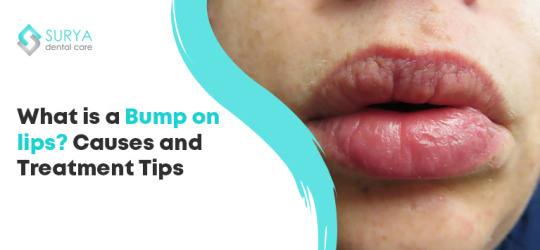
Does an unpleasant bump on your lips worry you? If so, you can get help from our extensive tutorial. This page provides helpful information about the causes, diagnosis, and treatment options for various lip imperfections, including pimples, white lumps, swelling protrusions, and more.
Recognizing Lip Bump Identification
Understanding the nature of these lip lumps is essential. They might have a variety of manifestations and underlying reasons. Common varieties include zits or outbreaks of acne that are limited to the lip region. Furthermore, the lips and other body parts may also develop little white pimples called Fordyce marks.
Reasons Behind Lip Bumps
A swelling lump on the lips can cause discomfort and raise questions. This condition could be caused by multiple factors:
Cold Sores: Resulting from the herpes simplex virus (HSV), cold sores hurt and enlarge the area around the lips. They appear as tiny, fluid-filled blisters.
Allergic Reaction: Lip swelling lumps, frequently accompanied by redness, itching, and inflammation, can be caused by sensitivity to lip care products, cosmetics, or food.
Canker Sores: Unlike cold sores, these tiny ulcers appear inside the mouth or on the lips and are brought on by stress, lip injuries, or specific foods.
A benign but uncomfortable cyst known as a
mucocele: forms on the lip when a salivary gland duct becomes clogged or injured.
Angioedema: Benign swelling under the skin's surface, usually affecting the lips and eyes, may be brought on by allergies, prescription drugs, or genetics.
Trauma or Injury: Unintentional injuries to the lip area from sports activities or falls can result in bumps because they can cause blood vessel damage and tissue inflammation.
Distinguishing Between Other Lip Conditions and Breakouts from Pimples
Fordyce spots, a disorder characterized by swollen oil glands, are sometimes confused with acne. Fordyce spots don't get infected or inflamed like acne does. The mouth region is commonly the site of pimples, which are characterized by redness, swelling, and pus-filled lumps.
Medication Options
Treatments for different kinds of lip lumps may differ:
White Spot on Lips: Use warm compresses, refrain from picking, apply over-the-counter topical medications, and maintain hydrated lips.
Fever Blister (Cold Sore): Use antiviral lotions, take antiviral pills orally, keep lips covered from the sun, and refrain from touching or picking.
Mucocele: Larger mucoceles may need to be surgically excised if they continue after two weeks, although smaller ones may go away on their own.
Finally,
The majority of lip lumps are harmless and go away on their own. Persistent bumps, however, require medical attention for an accurate diagnosis and customized treatment plans. Seeking medical advice is advised if lip lumps don't go away after using at-home treatments for more than two weeks.
FOR MORE INFO VISIT: https://www.suryadentalcare.com/bump-on-lips/
0 notes